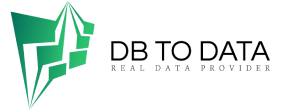Lead generation is the lifeblood of any business. Without a steady stream of potential customers, growth becomes stagnant. This article explores effective strategies to generate high-quality leads and nurture them into loyal customers.
Understanding the Lead Generation Process
It’s crucial to grasp the business contacts at marion center bank lead generation funnel. This process involves attracting potential customers, capturing their interest, nurturing them, and converting them into paying customers.
- Attraction: Drawing in potential customers through content marketing, SEO, social media, and other channels.
- Capture: Collecting contact information through forms, landing pages, and lead magnets.
- Nurture: Building relationships and trust through email marketing, personalized content, and engagement.
- Conversion: Transforming leads into customers through sales pitches, demos, and closing techniques.
Effective Lead Generation Strategies
1. Content Marketing
- Create High-Quality Content: Develop valuable content that addresses your target audience’s pain points and interests.
- Optimize for SEO: Ensure your content is easily discoverable through search engines.
- Utilize Different Formats: Experiment with blogs, videos, infographics, ebooks, and webinars.
- Promote Content: Share your content across social media, email, and other channels.
2. Search Engine Optimization (SEO)
- Keyword Research: Identify The Significance of Beijing Time relevant keywords and phrases your target audience is searching for.
- On-Page Optimization: Optimize website content, meta tags, and headings for target keywords.
- Link Building: Acquire high-quality backlinks to improve search engine rankings.
- Local SEO: Optimize for local search if your business has a physical location.
3. Social Media Marketing
- Choose the Right Platforms: Select platforms where your target audience is most active.
- Create Engaging Content: Share valuable content, interact with followers, and build a community.
- Run Targeted Ads: Utilize social media advertising to reach a specific audience.
- Leverage Social Proof: Showcase customer reviews and testimonials.
4. Email Marketing
- Build an Email List: Collect email addresses through website forms, pop-ups, and lead magnets.
- Segment Your List: Divide your audience into groups based on interests or demographics.
- Create Personalized Content: Deliver targeted emails based on subscriber preferences.
- Automate Email Campaigns: Use automation tools for efficient email marketing.
5. Pay-Per-Click (PPC) Advertising
- Identify Target Keywords: Choose relevant keywords for your ad campaigns.
- Create Compelling Ad Copy: Write persuasive ad copy that grabs attention.
- Optimize Landing Pages: Ensure landing pages align with ad messaging.
- Track and Analyze Performance: Monitor campaign performance and make adjustments.
6. Lead Magnets
- Offer Valuable Content: Create incentives like ebooks, whitepapers, or templates.
- Gate Your Content: Require visitors to provide contact information in exchange for the lead magnet.
- Promote Your Lead Magnet: Use social media, email, and content marketing to promote your offer.
7. Networking and Referrals
- Attend Industry Events: Connect with potential customers and partners.
- Build Relationships: Foster strong relationships with clients and colleagues.
- Leverage Existing Customers: Encourage satisfied customers to refer friends and family.
8. Public Relations (PR)
- Media Outreach: Build relationships with journalists and influencers.
- Press Releases: Distribute newsworthy information to media outlets.
- Crisis Management: Develop a plan to handle negative publicity.
Nurturing Leads
- Lead Scoring: Assign values to leads based on their behavior and engagement.
- Personalized Communication: Tailor messages to individual lead preferences.
- Lead Segmentation: Group leads based on shared characteristics.
- Lead Lifecycle Management: Track lead progression through the sales funnel.
Measuring Lead Generation Success
- Key Performance Indicators (KPIs): Define metrics to track lead generation performance.
- Conversion Rates: Measure the percentage of leads that convert into customers.
- Customer Acquisition Cost (CAC): Calculate the cost of acquiring a new customer.
- Customer Lifetime Value (CLTV): Determine the long-term value of a customer.
By implementing these strategies and continuously refining your approach, you can generate a steady stream of high-quality leads and drive business growth. Remember, lead generation is an ongoing process that requires experimentation and adaptation.
Would you like to focus on a specific lead generation method or discuss challenges you’re facing?


